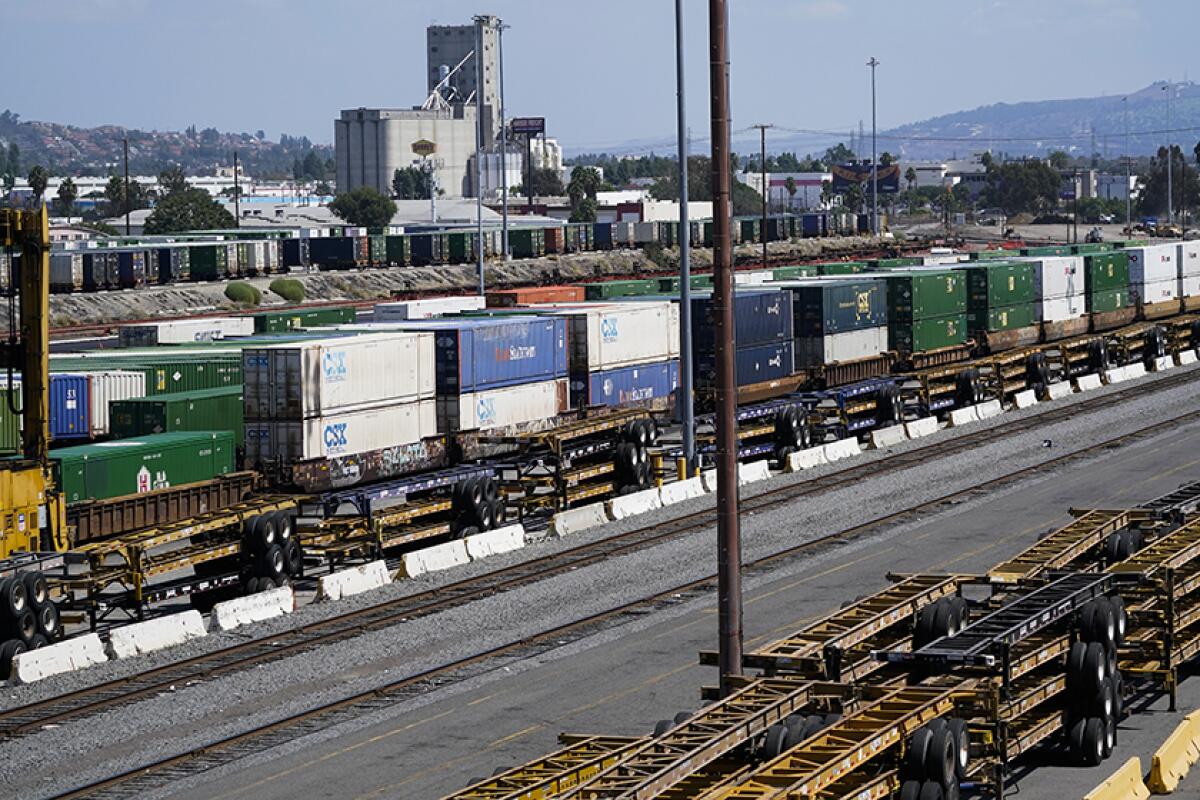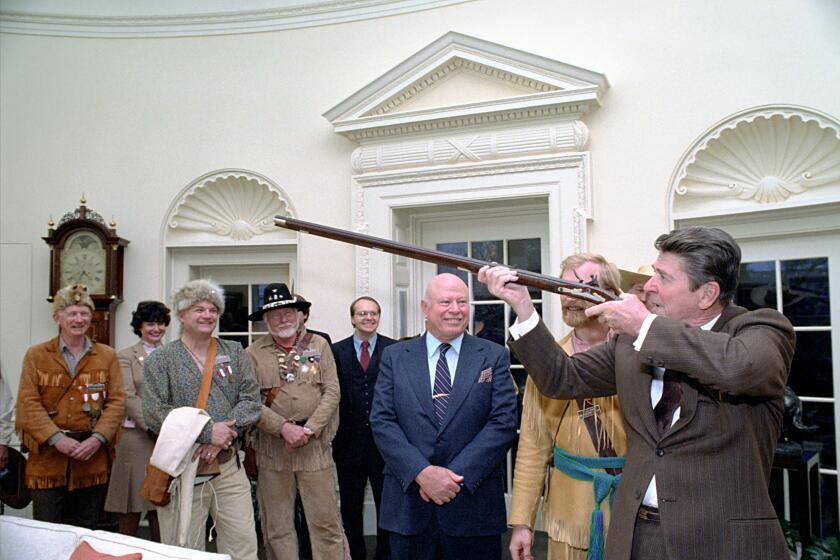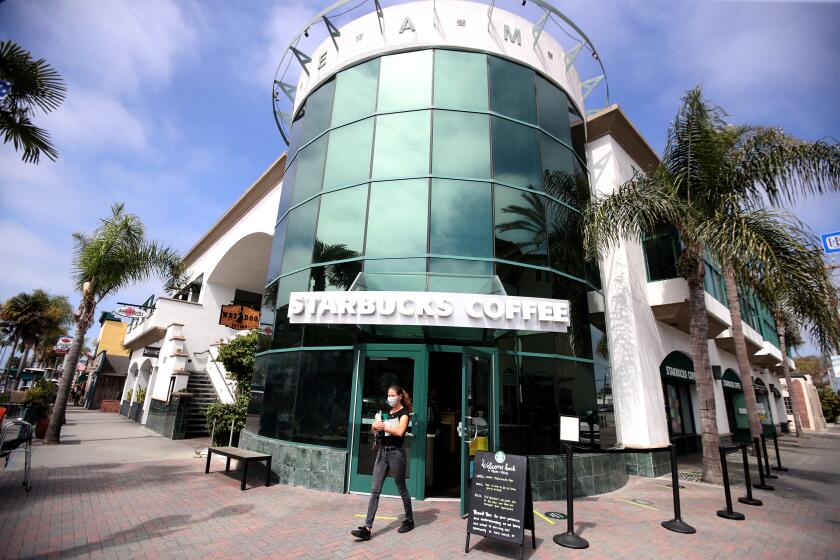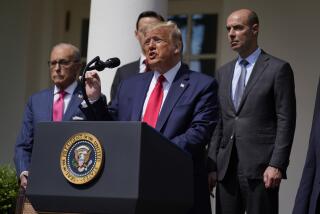Greedy railroads are to blame for rail strike threat. Why should Congress help them?

- Share via
The prevailing take on the looming national rail crisis is that a few recalcitrant railroad unions are poised go on strike Dec. 9, provoking an industrywide labor walkout that would inflict a “crippling” blow to the U.S. economy.
The quoted word comes from President Biden, who on Monday called on Congress to impose a contract on the workers and avert the strike.
His concern was echoed by House Speaker Nancy Pelosi (D-San Francisco), who indicated that her chamber is ready to do so. In the Senate, both Majority Leader Charles E. Schumer (D-N.Y.) and Minority Leader Mitch McConnell (R-Ky.) have expressed willingness to go along.
Few, if any, workers have more power over the economy than transportation workers.
— Labor historian Erik Loomis
Since Biden is known as firmly pro-labor to an extent not seen in the White House in nine decades, and Pelosi’s Democratic Party is generally favorable to organized labor, you might think they’re right to put the onus on the unions.
You would be wrong.
The truth is that the rail strike is being provoked by railroad managements that have absolutely refused to give in on a central goal of the rail unions: the provision of paid sick leave. The contract Biden wants to impose was negotiated by union leaders and railroad managements under the eye of the Biden administration. It requires one paid sick day per year, in an industry in which some leading companies don’t provide any.
Get the latest from Michael Hiltzik
Commentary on economics and more from a Pulitzer Prize winner.
You may occasionally receive promotional content from the Los Angeles Times.
Meanwhile, the railroads are absolutely swimming in profits — more than enough to have satisfied the unions’ demand and have tens of billions of dollars left over.
Pelosi says the House will vote Wednesday on whether to add seven sick days per year to the tentative contract. But that will happen only after the House votes on whether to impose the contract, and it will be a separate vote. This is an arrangement that reduces any leverage the workers had, to force more sick day into the contract, to nil.
Back in September, Biden celebrated what looked like a victory for railroad workers — a contract that gave workers a raise of some 24% over its five-year term, negotiated with White House help.
Since then, however, members of four of the 12 rail unions involved in the negotiations have rejected the deal. Since all 12 must approve the contract for it to go into effect, the rejections mean a strike is looming.
In his statement Monday calling on Congress to step in, Biden noted that “the majority of the unions in the industry have voted to approve the deal.” That’s misleading, however. The four holdouts represent 60,000 of the 115,000 unionized employees. In other words, although a majority of the unions have approved the contract, a majority of the workers have not. They should have our support.
Workers have been kicking back on the job since long before ‘quiet quitting’ became a thing. Not that there’s anything wrong with that.
During negotiations earlier this year under the eye of the emergency board Biden appointed in May, the unions sought at least 15 days of paid sick leave, with unused days available to carry over to subsequent years without limit.
The railroads balked. The union proposal would cost $688 million a year, they said. Ultimately they agreed to one paid sick day a year, plus any number of unpaid days, in the contract.
The unions rightly saw this provision as an insult. In global terms, it certainly was. The U.S. is one of only 11 United Nations member countries that provides no government-mandated sick leave. As I observed in 2020, that places America in an elite group that includes the Pacific Island nations of Tonga, Tuvalu and Nauru, along with Somalia.
The need for consistent sick leave policies was placed in stark relief by the pandemic, when sick workers were forced to continue working under conditions that threatened to amplify the spread of the COVID-19 virus to customers and co-workers.
The congressional solution to that crisis was meager: The initial pandemic relief measure — the Families First Coronavirus Response Act enacted in March 2020 — provided for two employer-paid weeks of emergency medical leave, but exempted businesses with 500 employees or more and allowed small businesses with fewer than 50 workers to claim hardship exemptions.
Some railroad companies were notorious for punitive time-off and scheduling policies. Among them was BNSF, the giant carrier owned by Warren Buffett’s Berkshire Hathaway. BNSF’s old system required workers to be on call 75% of the time; a policy implemented in January required them to be on call 90% of the time.
Union officials called the new system “the worst and most egregious attendance policy ever adopted by any rail carrier” and said that 700 workers quit before the company ended the policy in June.
The neoliberalism of Ronald Reagan has served only the rich, yet it still governs American economic policy. UC Berkeley’s Brad DeLong examines why in his new book.
How devastating would be the cost of 15 sick days a year? Not devastating at all. Let’s look at the numbers.
The major railroads are earning carloads of profits. Union Pacific boasted in January that 2021 had been its “most profitable year ever,” with $6.5 billion in net income after tax. The good times have continued to roll, with $5.4 billion recorded in the first nine months of this year.
BNSF reported $6 billion in profit last year and $4.5 billion through Sept. 30 this year. CSX reported $3.7 billion in profit last year and $3.1 billion through Sept. 30.
Those profits were plenty big enough to fund some $196 billion in stock buybacks and dividends — handouts to shareholders — from 2010 through 2020. The companies continued to shell out for buybacks and dividends by the billions last year and this year, all while whining about the much lower annual cost of sick leave for employees.
Top executives, by the way, shared the wealth. Lance M. Fritz, chief executive of Union Pacific, received $14.5 million in compensation last year, 162 times the average employee pay at the company. At CSX, the compensation of CEO James M. Foote rose more than 30% last year to $20 million from $15.3 million. The CEO-to-worker ratio there was 186 to 1.
It’s true that a rail strike would have severe consequences for the economy. It could be felt in millions of households, through higher prices for shipped foodstuffs and other goods and commodities, as well as possible layoffs in sectors reliant on rail shipments.
That’s the whole point of strikes — to impose economic pain in order to generate pressure for settlement. This is almost the only leverage that organized labor enjoys. It’s a categoric error to interpret that leverage as something that absolves employers of their responsibilities to negotiate fairly.
News coverage of this dispute, as it is in almost all labor disputes, depicts the unions and their members as the active parties.
Column: The big contributors to inflation you’re not hearing about: profiteering corporations
Corporations are raising prices at the fastest rate since 1955, driving inflation higher.
As the great press critic A.J. Liebling observed during a newspaper strike in 1963, the press traditionally presents union goals as “demands” and employer goals as “offers,” when it would be just as accurate to say that employers are demanding that workers accept their policies and the union members offer their work at a given price.
In this case, obviously, the railroads could avert a strike by coming to the table with a more accommodating sick leave policy, or “demand.”
U.S. laws, including that statute that Biden has asked Congress to activate, generally put their thumbs on the scale in favor of employers. As labor historian Erik Loomis has noted, “few, if any, workers have more power over the economy than transportation workers.”
As a result, strikes and threatened strikes in that sector have traditionally resulted in the extreme exercise of government authority.
The best example was the Pullman Sleeping Car strike of 1894, which was provoked by the monstrously closefisted George Pullman and was poised to expand into a nationwide rail strike. (Pullman laid off huge numbers of his employees and cut pay but refused to reduce rent on the houses he owned in his company town.)
President Grover Cleveland, whose Cabinet was stocked with moonlighting railroad lawyers, called out the military to quell the strike and put the railroad union leader, Eugene V. Debs, in jail, turning Debs into a national figure.
Although federal laws such as the Railway Labor Act of 1926 were typically presented as instruments of labor peace, in the current context they may have guaranteed that the railroads would hold fast to contract terms they knew would sow discontent among their workforce, and staffing reductions that make railroad work more hazardous.
But they were confident that, if push came to shove, the federal government would intervene on their side to keep the trains rolling. That’s what’s happening, with the deadline of Dec. 9 looming.
As Biden said, the secretaries of Transportation, Agriculture and Labor have all come to the conclusion that “there is no path to resolve the dispute at the bargaining table and have recommended that we seek congressional action.” Thanks to the prospect of congressional action, the railroad workers are destined to lose. But don’t make the mistake of thinking that they’re the guilty parties.
More to Read
Get the latest from Michael Hiltzik
Commentary on economics and more from a Pulitzer Prize winner.
You may occasionally receive promotional content from the Los Angeles Times.














